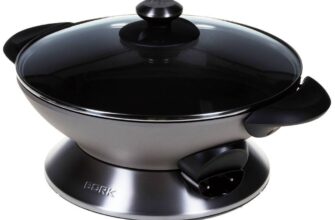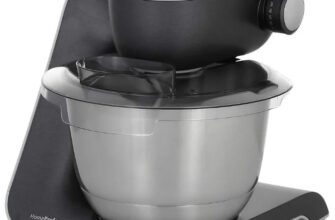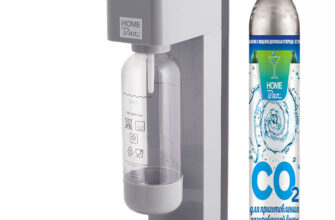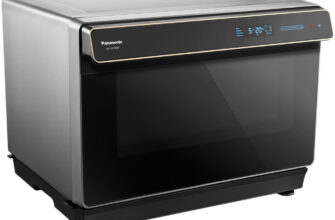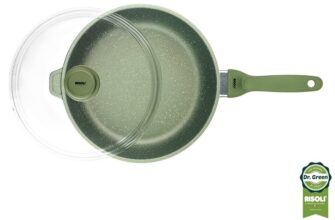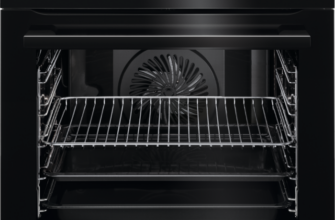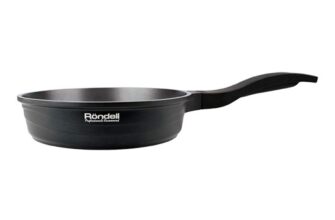Review of the best according to the editorial board. On the selection criteria. This material is subjective and does not constitute advertising and does not serve as a purchase guide. Before buying, you need to consult with a specialist.
Buying a built-in hob attracts many. Why spend money on a bulky gas stove if the oven is replaced by a microwave, and the place in the kitchen, as is often the case, is not at all dimensionless? In addition, the compact panel is easier to fit into the interior, easier to maintain, and, just as important, you can buy it cheaper.
Therefore, the choice of models and the choice of designs for hobs are considerable. Gas hobs are the obvious choice for a gasified home: their operation is inexpensive, as is maintenance, after turning off the burner cools down quickly enough and becomes safe. But do not forget about the explosiveness of natural gas, as well as the danger of open fire. In this regard, electrical panels with incandescent elements are much safer. The surface of the electric hob can be made absolutely flat, simplifying to the limit and cleaning it. But on the other hand, they will require a powerful input of electricity (the line must be pulled directly from the meter and with a large wire), they do not cool down for a long time after turning off. In this regard, induction models are more convenient and safe: during their operation, it is the bottom of the pan that heats up, and not the hotplate. Therefore, leaving the induction hob turned on is absolutely safe – you can touch its surface without any problems, and food that has escaped from the pan will not burn to the hob. Of course, such panels also have their disadvantages – they can only heat dishes with pronounced magnetic properties, that is, not even all stainless steel is suitable for this, not to mention heat-resistant glass and ceramics. However, this is not the biggest sacrifice compared to the convenience and safety gains, is it? Another drawback common in budget models is more sensitive: instead of a smooth change in power, the burner starts to turn off, after some cooling of the dishes, the burner turns on again – that is, by boiling water, for example, it is clearly visible that it even visually goes intermittently. More advanced induction models with PWM power control are relieved of this drawback, but they are also much more expensive.
- Rating of the best inexpensive hobs
- The best inexpensive induction hobs
- Indesit VIA 640 0 C
- Advantages
- disadvantages
- Weissgauff HI 640 BS
- Advantages
- disadvantages
- Beko HII 64400 ATX
- Advantages
- disadvantages
- The best inexpensive electric hobs
- Electrolux EHF 96547 FK
- Advantages
- disadvantages
- Indesit RI 260 C
- Advantages
- disadvantages
- Bosch PKE645B17
- Advantages
- disadvantages
- Hotpoint-Ariston HR 622 C
- Advantages
- disadvantages
- Weissgauff HV 641 BS
- Advantages
- disadvantages
- Samsung CTR432NB02
- Advantages
- disadvantages
- The best inexpensive gas hobs
- Weissgauff HGG 641 WGH
- Advantages
- disadvantages
- Indesit PR 642 (BK)
- Advantages
- disadvantages
- MAUNFELD EGHG 64.1CB / G
- Advantages
- disadvantages
- Fornelli PGA 60 Grazia Ivory
- Advantages
- disadvantages
- The best inexpensive combination hobs
- Gorenje K 6N20 IX
- Advantages
- disadvantages
- Simfer H60V31O512
- Advantages
- disadvantages
Rating of the best inexpensive hobs
| Nomination | a place | Name of product | price |
| The best inexpensive induction hobs | 1 | Indesit VIA 640 0 C | RUB 24,200 |
| 2 | Weissgauff HI 640 BS | RUB 15,990 | |
| 3 | Beko HII 64400 ATX | RUB 20,790 | |
| The best inexpensive electric hobs | 1 | Electrolux EHF 96547 FK | RUB 20,990 |
| 2 | Indesit RI 260 C | 17 400 rub. | |
| 3 | Bosch PKE645B17 | RUB 22,990 | |
| 4 | Hotpoint-Ariston HR 622 C | RUB 16,590 | |
| 5 | Weissgauff HV 641 BS | RUB 12,990 | |
| 6 | Samsung CTR432NB02 | RUB 13,990 | |
| The best inexpensive gas hobs | 1 | Weissgauff HGG 641 WGH | RUB 13 490 |
| 2 | Indesit PR 642 (BK) | RUB 16 690 | |
| 3 | MAUNFELD EGHG 64.1CB / G | 16 490 RUB | |
| 4 | Fornelli PGA 60 Grazia Ivory | RUB 19 390 | |
| The best inexpensive combination hobs | 1 | Gorenje K 6N20 IX | RUB 14,000 |
| 2 | Simfer H60V31O512 | RUB 15,000 |
The best inexpensive induction hobs
Indesit VIA 640 0 C
Rating: 4.9
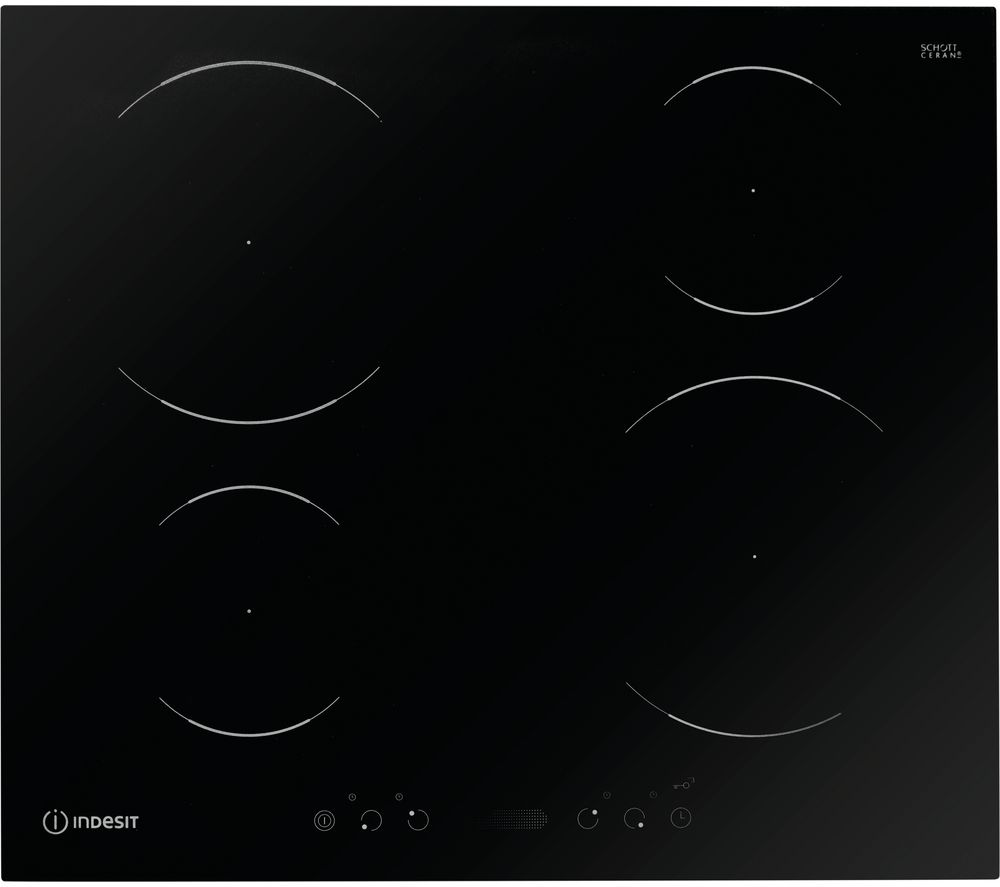
The hob is designed in a minimalist style – and its work surface is made of black glass-ceramic and the control buttons are in the same color. Only the Indesit logo stands out in the corner. The installation of the panel is independent, that is, it can be built in without restrictions and without being tied to the oven. The control is touch-sensitive, quite convenient: for example, to adjust the heating power of the selected burner, it is enough to slide your finger across the control zone to the right (increase in power) or to the left (decrease): in the age of smartphones, this is understandable without reading the instructions. Each hotplate can be set to its own timer.
Heating zones in three sizes: one with a diameter of 145 mm, two – 180 mm, the last – 210 mm. There is a control of the presence of dishes on the panel and automatic shutdown of the corresponding heating zone if the dishes are removed. For safety, the stove has a 'child mode', when all touch controls are blocked, except for the off button – but it must also be held down for about 20 seconds. Also, the manufacturer has not forgotten about the residual temperature control – when removing hot dishes, the H symbol will light up on the screen, indicating that the surface has still retained heat from the dishes. The same indicator will immediately indicate if you place the wrong type of cookware on the hotplate.
It is worth pointing out the peculiarity of the panel noted by the owners. It is very sensitive to voltage drops (the burners do not heat, an error F02, F04 or C84 is issued) – if the supply wiring is insufficient or there are problems with power supply from the substation, it will not be possible to use the hob normally. To solve this problem, we can recommend installing a stabilizer of the appropriate power: keep in mind that the panel can consume up to 7.2 kW, that is, the stabilizer will not be needed cheap.
Advantages
- Intuitive touch controls;
- Design that fits into the interior;
- Fast heating.
disadvantages
- Demanding power supply;
- Lack of PWM control (after boiling, the burners heat up and turn off with noticeable pauses, boiling is not constantly maintained).
Weissgauff HI 640 BS
Rating: 4.8
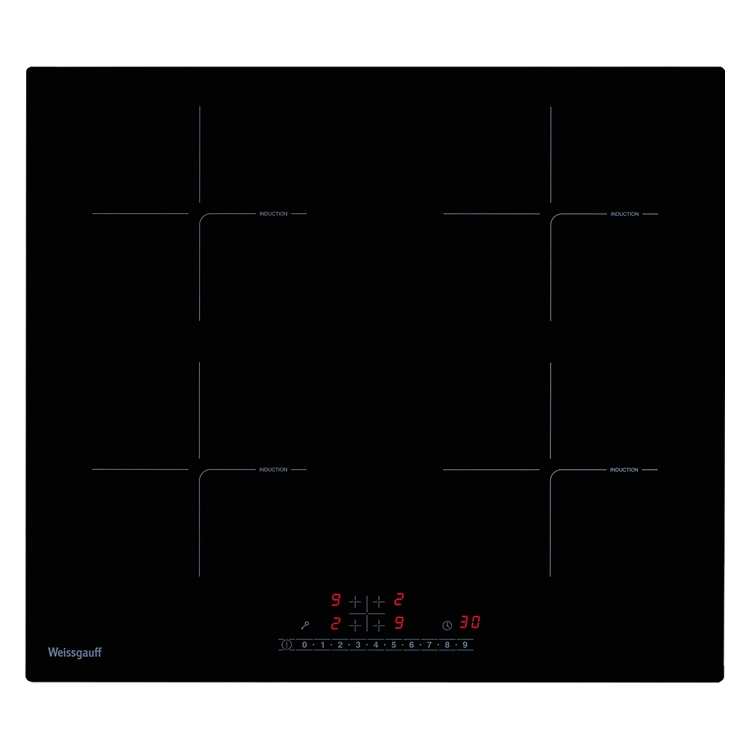
Except for the fact that the heating zones are not indicated by circles, but by crosses, the Weissgauf is very similar in design to Indesit. For example, the power of the burners is controlled in the same way – with a touch slider. The number of burners and their total power are also similar – 4 burners in total consume up to 7.2 kW of power. However, all four crosses are the same size, despite the fact that the power of the burners is different – in this regard, circles of different diameters, like Indesit, are much more convenient. Immediately you have to remember that the upper right and lower left burners are more powerful and are designed for larger pots and pans (note that circles are used in a largely similar model HV 640 BS).
The Weissgauf controls and displays are simpler and clearer than Indesit. Above the long power adjustment slider, there are power indicators for each of them, next to the pictograms that indicate a specific hotplate. However, even without these icons, everything is clear anyway, since the indicators are placed in the same order as the burners: 2×2. The icons themselves are also touch-sensitive controls – they are used to turn the burners on and off (the slider does not need to be set to zero), to select the hotplate to set the timer. The timer indicator is separate, located on the right. The timer can be set for any hotplate for up to 99 minutes. There is a sensor for the presence of dishes on the burner and, accordingly, an indicator of residual heat after removing the dishes (the figure indicating the set power level changes to the symbol H).
Compared to Indesit, this hob is noisier, primarily due to the cooling fan. There is also no boiling machine with PWM power control, after the water boils, the stove begins to turn off the burner completely within the temperature hysteresis threshold, then turn it on again at the set power before boiling.
Advantages
- Extremely simple and intuitive control;
- Easy to clean;
- High heating rate.
disadvantages
- Noisiness;
- Intermittent power supply during boiling;
- It is not clear from the marking of the burners what power each has.
Beko HII 64400 ATX
Rating: 4.7
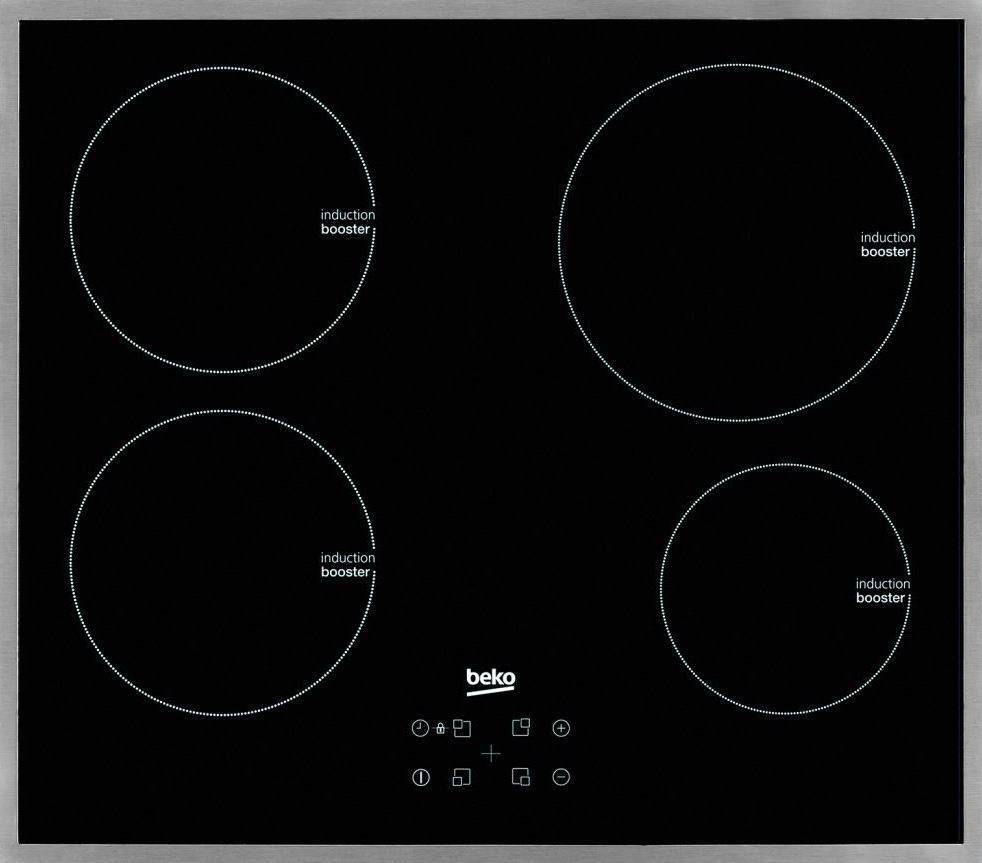
On the Beko hob, separate heating zones are marked with circles of different diameters, which is more convenient than Weissgauf 'crosses', but at the same time the smallest circle is for some reason shifted to the right edge of the panel: this interferes with the installation of dishes, and the visual asymmetry itself spoils the design. The burners, like those of competing models, are four, of which both the left ones are of the same diameter (180 mm), but their power is the same as that of the largest 210 mm one at the top right, the reduced power is only for the 145 mm one. The total power is 7.2 kW, so in terms of heating capabilities, all three stoves in our rating can be considered virtually identical.
There is no power adjustment slider here. To adjust, select the touch button-icon of the corresponding heating zone, and then increase or decrease the number displayed on the screen next to the icon with the buttons 'plus' and 'minus'. Therefore, in terms of ease of control, this panel loses to both Weissgauf and Indesit. On the other hand, all burners have a power boost for the fastest heating (from 1.6 to 1.8 kW for the small burner and from 2 kW to 2.3 for the others) – for this you need to, after setting the maximum power level for the selected burner (' 9 '), press the' plus' again.
There is no PWM power adjustment here, as in other budget hobs, here either. But it is about this model that the owners' reviews repeatedly indicate that at a power level of less than 3 the pauses between switching on and off are excessively long.
Advantages
- Possibility of using the 'afterburner' of burners;
- Simple enough controls.
disadvantages
- Small heating zone offset to the edge;
- No adjustment slider;
- Excessive pauses when operating at low power.
The best inexpensive electric hobs
Electrolux EHF 96547 FK
Rating: 4.9
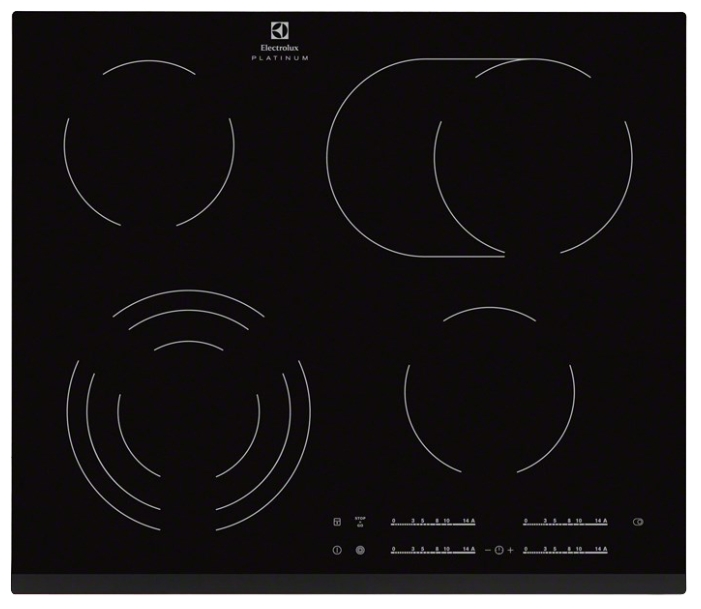
Visually, this hob is no different from inductive ones – the same minimalistic black surface. But at the same time, on the panel layout, it is immediately clear that the manufacturer has not forgotten about the possibility of installing oblong dishes like goose pans (upper right burner), and added a 'multi-size' heating zone at the bottom left. Both of these expansion zones are enabled and disabled with a separate button. The total power of the burners is 7.1 kW. Please note that this is far from the same as the comparable 7.2 kW for induction panels from our rating: the efficiency of induction panels is higher.
Controlling the panel is extremely simple and convenient, we can call it a reference: each hotplate is assigned a separate touch slider, you do not need to preselect a specific hotplate for adjustment. Another useful feature is the 'Eco Timer', which, when setting the cooking time, takes into account the residual heat of the hotplate and cuts off the power supply earlier than the set time, saving electricity and allowing the dishes to be removed from a colder surface, which will take less time to cool down. Сенсорная кнопка Stop&Go позволяет быстро 'притормозить' готовку на конфорке и так же быстро ее возобновить.
Since the thermal inertia of electric hobs is much greater than that of induction hobs, the 'stepping' power control is not felt. Since it takes longer to cool down, the residual heat indication is three-stage: the panel immediately shows that the panel is still too hot or, conversely, is almost cold.
It is worth noting that as many as 14 power adjustment levels used here are practically useless in practice: the owners point out that in reality, as a 'slow heating', only levels 10-11 have to be used, lower levels are essentially useless. It is most convenient to use the 'automatic heating' function, when the burner turns on and heats up at maximum power, and only then it goes into the mode set by the slider: this is faster. It should also be borne in mind that the touch control is sensitive to splashes, which can be dangerous if a drop will turn on a free burner, on which, for example, an almost empty kettle can stand. So don't forget the 'kid mode', which locks out the touch controls.
Advantages
- The presence of two expandable heating zones;
- Three-stage indication of residual heating;
- Energy saving 'Eco-timer'.
disadvantages
- Slow heating;
- Practically useless low power modes;
- Touchpad too sensitive.
Indesit RI 260 C
Rating: 4.8
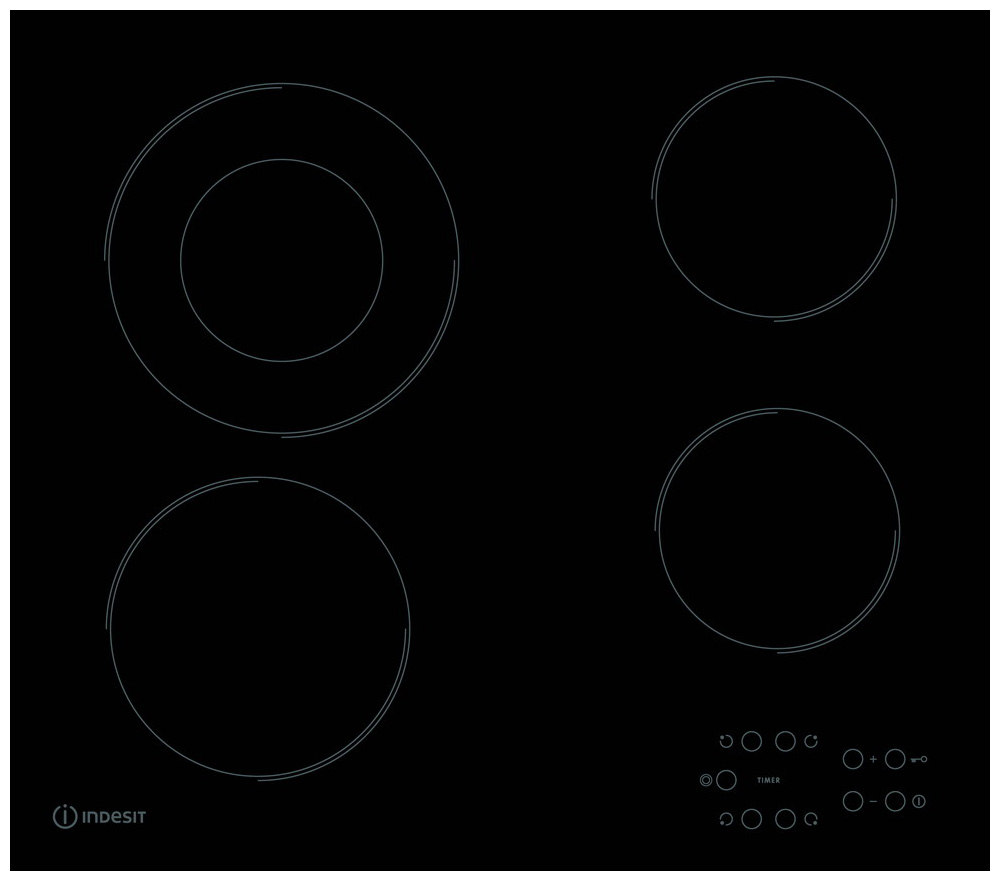
This hob has four cooking zones, and all of them are placed without much symmetry, which visually looks unpleasant. The owners note that their location is not the most logical. There is only one expandable heating zone. Moreover, it expands only in diameter (120/210 mm) – there is no special area for long dishes, like the Electrolux EHF 96547 FK. It is this zone that is usually used most often, but for some reason it is located on the back row. The controls are also less convenient (you must first select the hotplate for setting, then set the power level with the plus-minus buttons, the Electrolux separate touch sliders are much more ergonomic).
The removal of the controls to the lower right corner, which required such a strange arrangement of the burners, also has a logical rationale: when working with panels of this type, having a common glass-ceramic surface, it all heats up very much – therefore the buttons were taken out to the 'coldest' corner, next to low-power burners.
Advantages
- Fast enough heating;
- Easy to clean.
disadvantages
- Only one expandable zone, no expandable in length at all;
- Unaesthetic design.
Bosch PKE645B17
Rating: 4.7
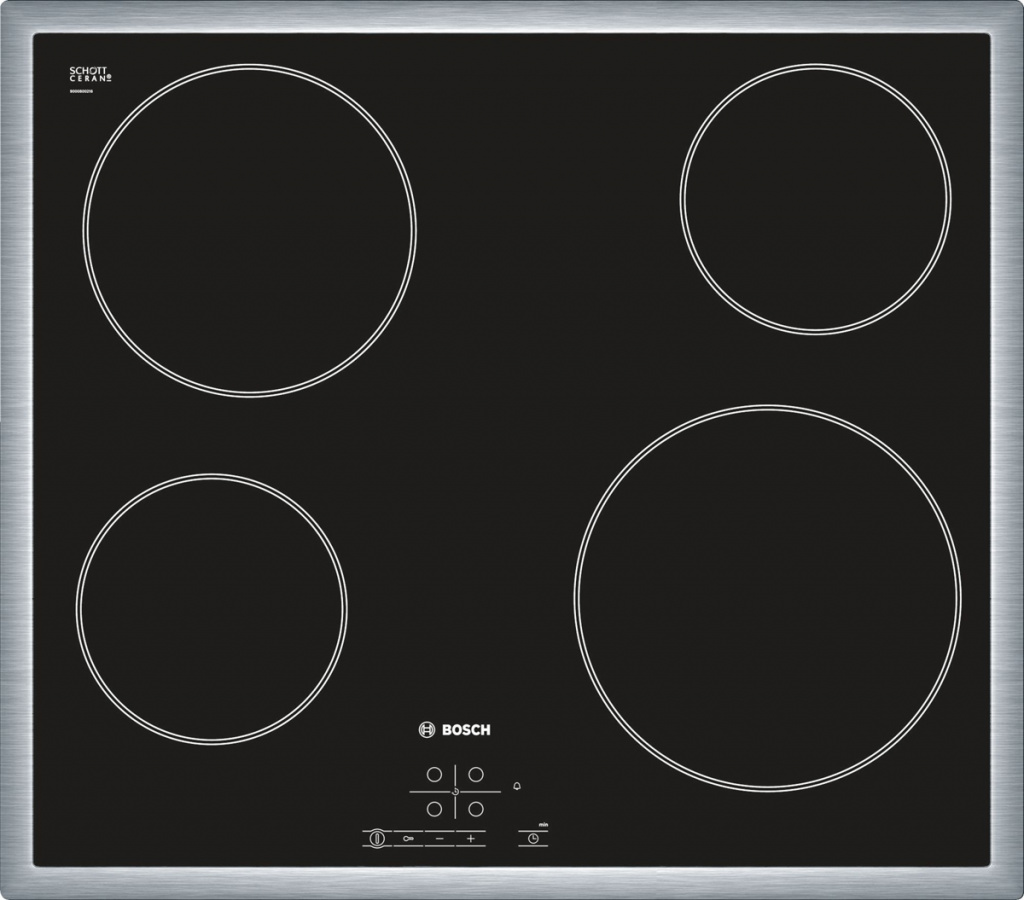
The frame hob from Bosch also has some design asymmetry, but looks more attractive than Indesit. The largest hotplate is located in its usual place, bottom-right – but because of this, the control buttons located in the center get very hot when this hotplate is used for a long time. Unfortunately, there are no expandable heating zones here at all, neither in diameter nor in length.
The control is similar to Indesit RI 260 C – in the same way, you need to select the hotplate, and then use the plus-minus buttons to set the power level. At the same time, the adjustment buttons are visually made so that they resemble a slider. The power control is seventeen-step, but, as in the case of the Electrolux EHF 96547 FK, in practice, such a number of steps is not needed. The 145 mm burner has a heater power of 1.2 kW, the 180 mm burner has two kilowatts. The 210 mm hotplate is the most powerful – 2.1 kW. Residual heat indicator – two-stage.
Advantages
- Convenient location of the burners.
disadvantages
- Lack of expandable zones;
- Low-power 145 mm hotplate.
Hotpoint-Ariston HR 622 C
Rating: 4.6
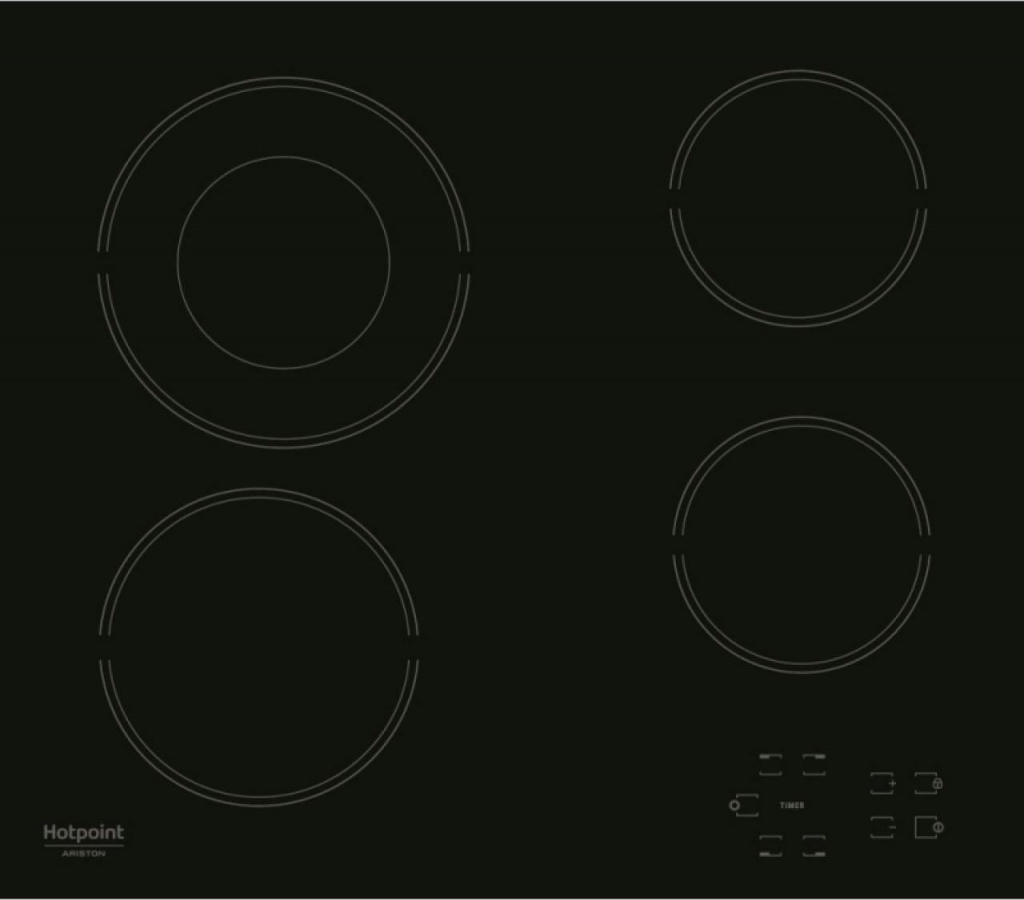
The largest heating zone here is made expandable (120/210 mm) and moved to the far row, which is not always convenient. For less heating, the control buttons were moved to the lower right corner, like in the Indesit RI 260 C, but the burners themselves are located more symmetrically, visually Hotpoint-Ariston wins. Power control – buttons 'plus-minus', no slider.
The residual heat indicator is one-stage, which is not very convenient for plates with such thermal inertia. The touch buttons are quite 'oak', their reaction is not as fast and sharp as that of the same 'Electrolux', but in practice this also has its advantages: according to the owners, the stove does not suffer from false alarms from splashing water or oil falling on the sensor buttons.
Advantages
- The presence of an expandable heating zone;
- Moderate heating of the button zone.
disadvantages
- Lack of longitudinal expansion;
- Loud crackle of the relay when the power of the burner is on is reduced.
Weissgauff HV 641 BS
Rating: 4.5
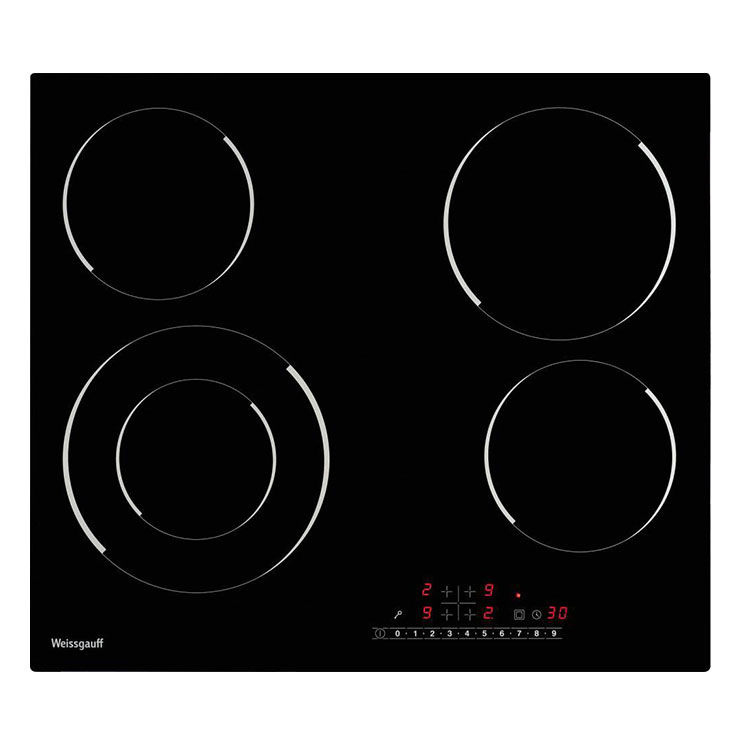
On this hob, the boundaries of the heating zones are not aligned in the centers, but along the edges of the contour, which makes it not so convenient to place the dishes on them (and the edges get hotter, which potentially increases the likelihood of cracking). But on the other hand, the burners themselves are located logically – the most frequently used ones are located in the bottom row (medium diameter and small, expandable to a maximum diameter of 23 cm – more than in many panel models). Note that all zones here are larger than usual for many manufacturers – 165 mm instead of 145, 200 mm instead of 180, 230 instead of 210. There is no 'longitudinal' expansion.
The control is the same as for Weissgauf induction hobs – with a touch slider common to all hotplates, which requires you to preselect the adjustable hotplate with the corresponding pictogram. 9 steps of adjustment is a reasonable optimum, the slider and displays are not overloaded with a large number of intermediate steps, which, as the example of other panels in today's rating show, are useless: both the owners and our experts unanimously agree on this. Here, half of the scale is already operational, in contrast to models with a large number of steps, where the owners actually use only the last third.
The total power of the burners is slightly less than 7 kW, this allows the hob to heat up quickly enough – especially if an expandable burner is used.
Advantages
- Convenient layout of the burners (but it was worth moving them from the edges of the contour to the center).
- Slider control;
- Large area of heating zones in comparison with many competitors.
disadvantages
- Cooking zones offset to the edges.
Samsung CTR432NB02
Rating: 4.4
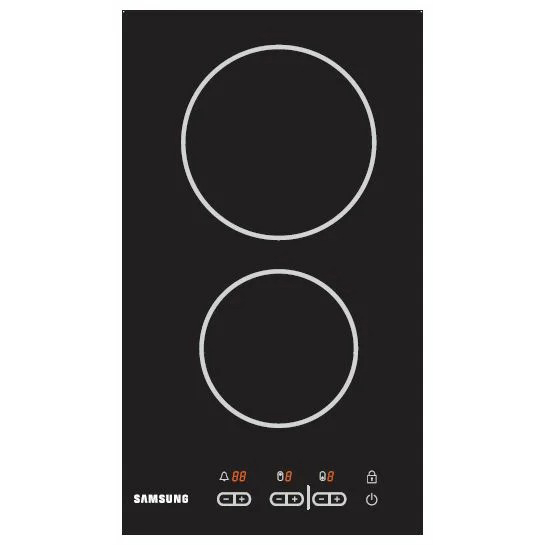
This compact hob has only two cooking zones, so it is ideal for small families living in confined spaces. A more powerful burner is located closer to the wall during installation, but due to its small size, it is not far from it. Setting the power is simple – using the plus-minus buttons for each burner separately.
The power of the burners is moderate – 1.2 kW for the 145 mm and 1.8 kW for the 180 mm. Therefore, they warm up for a long time, but the overall surface of the panel, due to the small area, heats up strongly with prolonged cooking. Expansion is not provided for either.
Advantages
- Possibility of installation in the most confined conditions;
- Good reliability.
disadvantages
- Only two burners (and many owners say that a small one should be made larger and more powerful);
- Excessive sensor sensitivity.
The best inexpensive gas hobs
Weissgauff HGG 641 WGH
Rating: 4.9
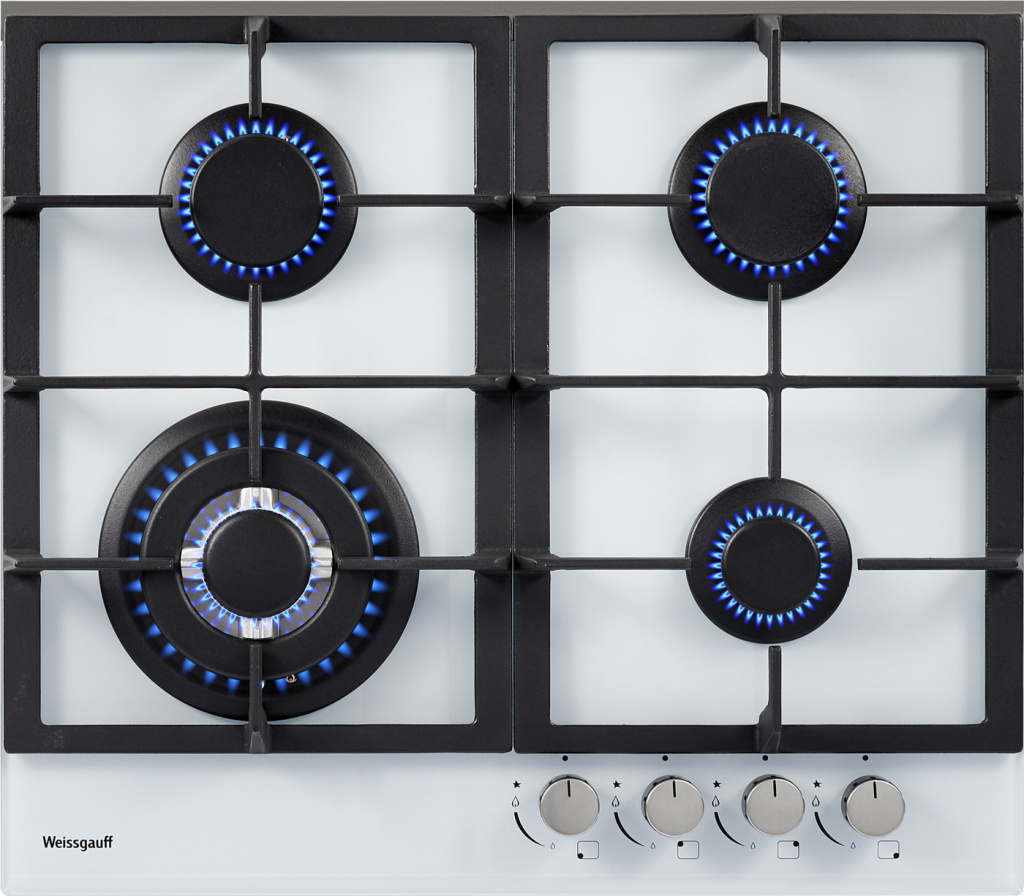
A useful feature of this model is the 'double' wok-burner at the bottom-left, which allows evenly heating massive dishes of large diameter. Its thermal power is 3.4 kW, so it can handle tasks that will be beyond the reach of competitors with electric or induction heaters – for example, homebrewers will appreciate it.
All four burners are equipped with automatic electric ignition and gas control. The durable cast-iron grill is easy to clean, but its owners note one drawback – the central cutout is the same in size on all four burners, which makes it inconvenient to put the average Turkish coffee pot on a small burner.
Advantages
- Automatic ignition;
- Gas control on all burners;
- Dual-circuit wok burner.
disadvantages
- The cutout on the small burner grate cost less to make.
Indesit PR 642 (BK)
Rating: 4.8
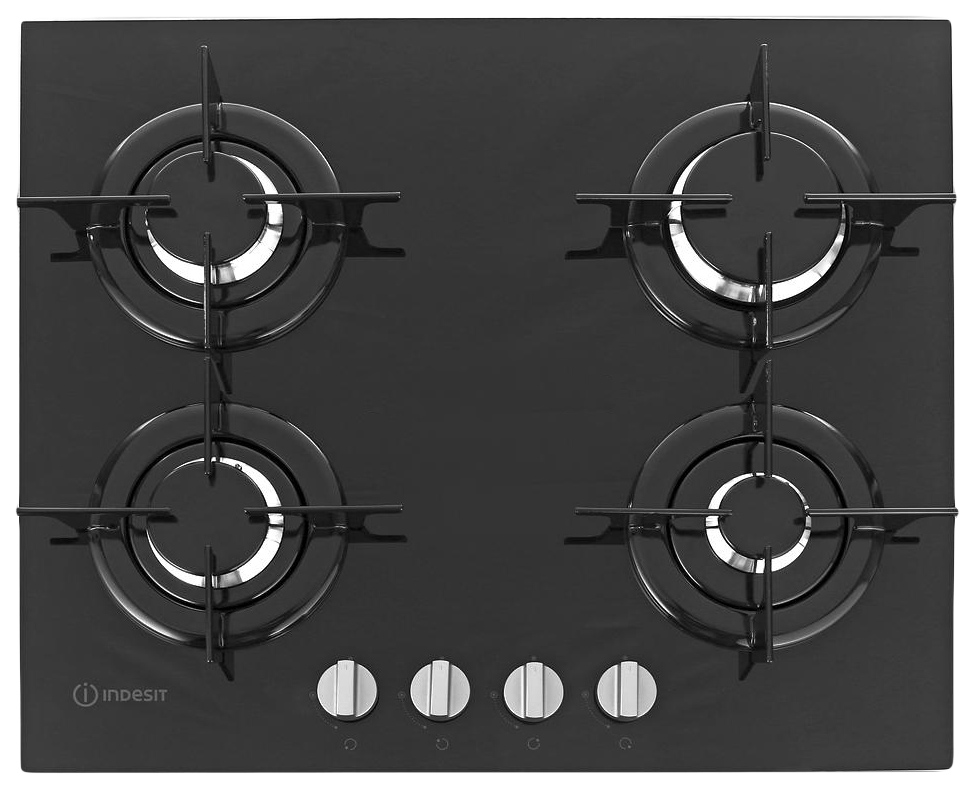
This hob is made minimalistic – instead of a common cast-iron grill, each burner has its own, cross design. The largest burner is distant to the wall, which is not always convenient. Electric ignition and gas control are provided.
The main inconvenience, according to the owners, is precisely the design of the grates, which does not allow large pots to be safely placed on the panel. This is also hindered by the close arrangement of the burners – two pans next to each other are already interfering with each other. And an absolutely flat surface when water or milk 'escapes' will inevitably lead to its flowing to the floor in all directions.
Advantages
- Stylish design;
- Easy to clean.
disadvantages
- Close proximity of burners.
MAUNFELD EGHG 64.1CB / G
Rating: 4.7
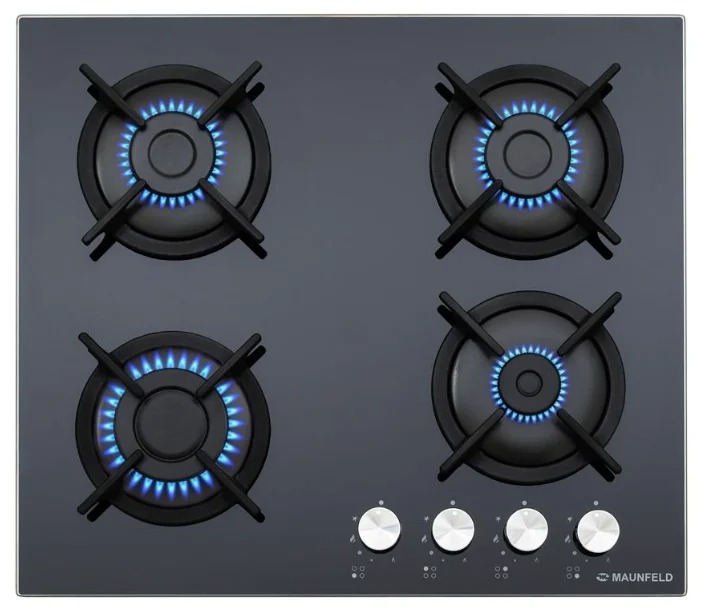
The ergonomics of the panel are well calculated – the largest (thermal power – 2.6 kW) and the smallest (1 kW) burners are installed in the row closest to the owner, two 'medium' burners of 1.7 kW are distant. The control knobs are offset to the side of the small hotplate, so they do not get as hot when cooking on a high flame on the large hotplate as on panels with central knobs. The grilles, like that of Indesit PR 642 (BK), are individual.
The panel itself is produced in Turkey, but the components are used by European ones – gas jets Sourdillion (France), SABAF burners (Italy). The kit includes additional jets for operation from a cylinder. Unfortunately, the owners note that both the grates and the surface of the burner do not have a sufficiently effective anti-corrosion coating, which is why they have to be cleaned more often and longer.
Advantages
- Reliable gas control;
- Convenient arrangement of burners and handles.
disadvantages
- Poor anti-corrosion protection for burners and grates.
Fornelli PGA 60 Grazia Ivory
Rating: 4.6

This hob has a high rim, therefore, unlike Indesit and Maunfeld, with small volumes of 'escaped' liquid, it does not leak to the floor, collecting inside the rim. The location of the burners and control knobs is the same as in the Maunfeld. The grids are common for two burners, which allows you to easily install large-sized dishes
The largest burner is two-row, like that of the Weissgauff HGG 641 WGH, while its heat output is even slightly higher – 3.6 kW. The top panel is stamped from metal, and not from tempered glass, like other models in the rating, which reduces the price, but, according to customer reviews, this panel is not always stamped exactly, which makes it difficult to embed (gaps remain), and its rigidity is low.
Advantages
- Deepening for collecting liquid;
- Powerful wok burner.
disadvantages
- Insufficient rigidity of the metal panel.
The best inexpensive combination hobs
Gorenje K 6N20 IX
Rating: 4.9
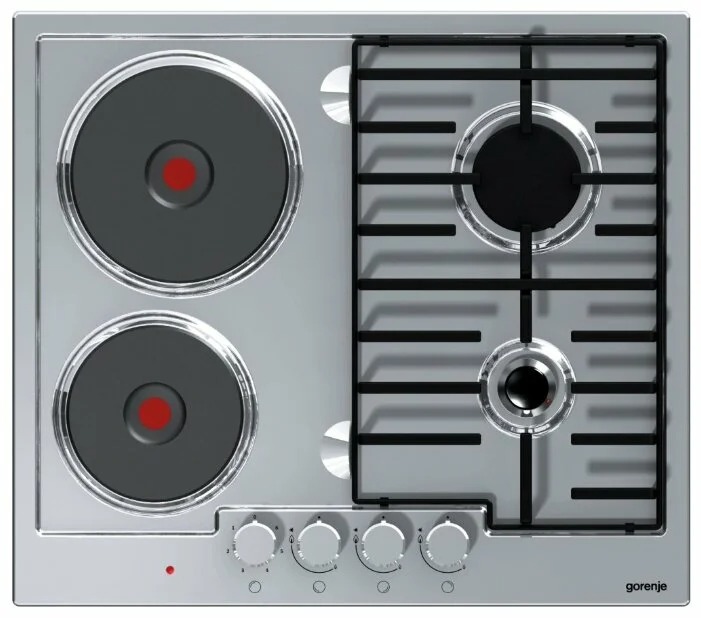
The panel is made of stainless steel, so there is no need to be afraid of the enamel chips – it is simply not there. There are four burners, of which the right ones are gas (both are small, 46 and 94 mm), the left ones are electric (145 and 180 mm). The most powerful one is 94 mm, it provides thermal power up to 3 kW, electric ones are designed for 1.5 and 2 kW, respectively. With such a selection of diameters and capacities, the panel came out quite versatile and will always help out in the event of a power failure in the network. The planes of the electric burners are cast iron.
The panel is made compact, which has its own drawback – the owners note the inconvenience of installing the overall promise on a nearby electric burner, the handles are too close to it.
Advantages
- Successful selection of standard sizes and power of burners;
- Stainless steel for easy maintenance;
- Side to protect against dripping.
disadvantages
- Closely arranged burners and handles.
Simfer H60V31O512
Rating: 4.8
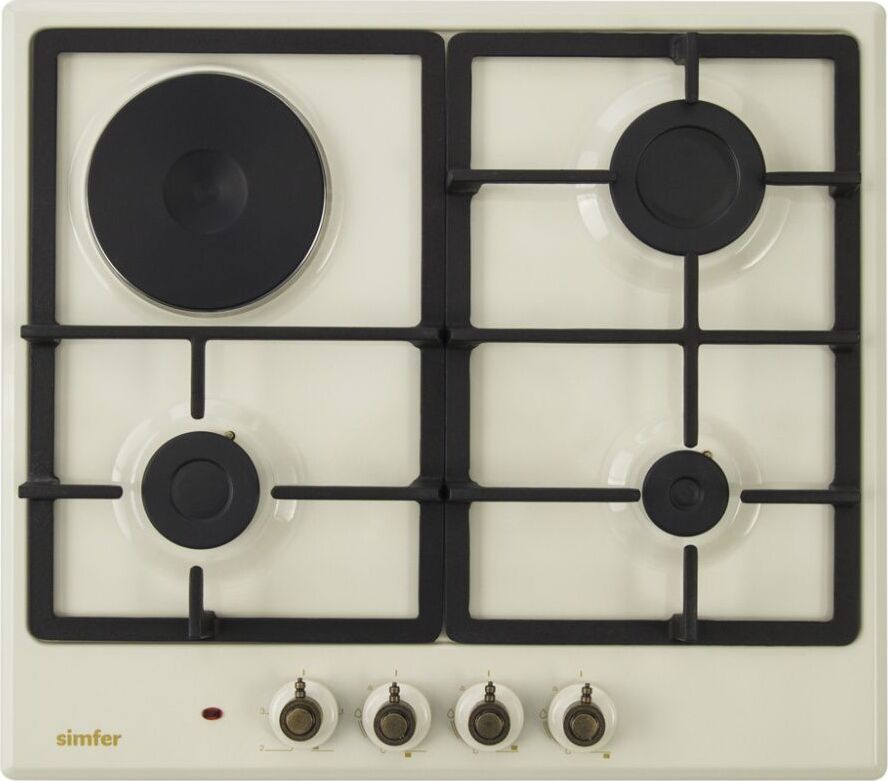
This panel has only one electric burner (top-left), the rest are gas. Cast-iron grates cover two burners each (more precisely, the left electric burner only surrounds for stability, there are no ribs on it in this place). The surface is enameled with a small depression for collecting liquid.
The burners are spaced wide enough, when installing oversized dishes, they do not interfere with each other – in this regard, the layout is more successful than that of Gorenje. The most powerful burner has a heat output of 3 kW, the smallest one – 1 kW, so we can call the panel quite versatile.
Advantages
- Convenient layout;
- Gas control on all burners.
disadvantages
- Only one electric hotplate.
Attention! This rating is subjective and does not constitute an advertisement and does not serve as a purchase guide. Before buying, you need to consult with a specialist.


